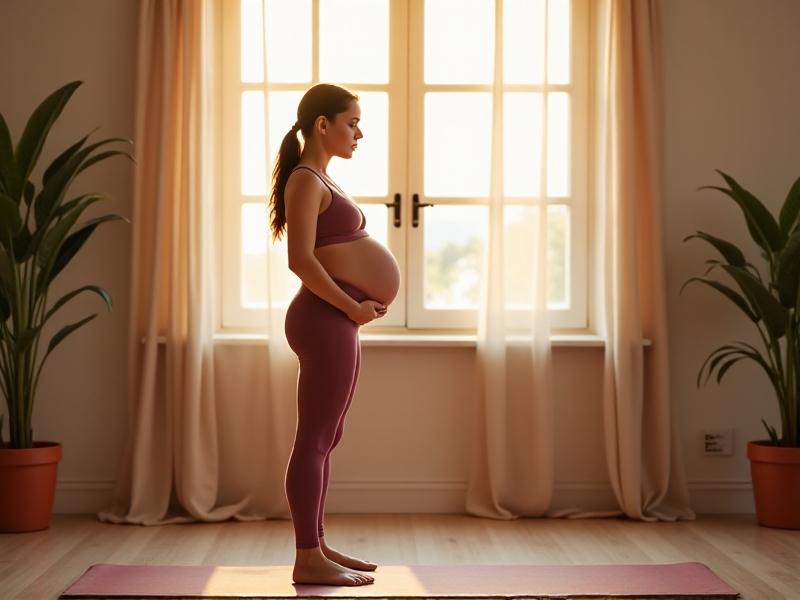Postpartum Jump Training Progression Phases
Understanding Postpartum Jump Training
Postpartum jump training is a specialized form of exercise designed to help new mothers regain strength, stability, and confidence in their bodies after childbirth. This type of training focuses on gradually reintroducing high-impact movements, such as jumping, in a safe and controlled manner. The goal is to rebuild core and pelvic floor strength while minimizing the risk of injury.
During pregnancy, the body undergoes significant changes, including hormonal shifts, weight gain, and altered posture. These changes can lead to weakened muscles, particularly in the core and pelvic floor. Jump training post-pregnancy must be approached with care to ensure that these areas are adequately strengthened before progressing to more intense exercises.
Understanding the importance of postpartum jump training is the first step in creating a safe and effective workout plan. By focusing on proper progression and listening to your body, new mothers can regain their pre-pregnancy fitness levels while prioritizing their overall health and well-being.

Phase 1: Assessing Readiness for Jump Training
Before beginning any postpartum jump training program, it is crucial to assess your readiness. This phase involves evaluating your physical condition, particularly the strength of your core and pelvic floor. A consultation with a healthcare provider or a certified postpartum fitness trainer can help determine if your body is ready for high-impact exercises.
Key indicators of readiness include the ability to perform basic core exercises, such as planks and bridges, without pain or discomfort. Additionally, new mothers should be free from any postpartum complications, such as diastasis recti or pelvic organ prolapse, before starting jump training.
This phase also involves setting realistic goals and understanding the importance of patience. Rushing into intense exercises can lead to injury, so taking the time to build a strong foundation is essential. By thoroughly assessing your readiness, you can ensure a safe and effective start to your postpartum fitness journey.

Phase 2: Building Core and Pelvic Floor Strength
Core and pelvic floor strength are the cornerstones of postpartum jump training. This phase focuses on exercises that target these areas, such as pelvic tilts, kegels, and bird-dogs. Strengthening these muscles not only supports the spine and pelvis but also improves overall stability and balance.
It is important to perform these exercises with proper form and alignment to maximize their effectiveness. Incorporating breathing techniques, such as diaphragmatic breathing, can further enhance the activation of the core and pelvic floor muscles.
Consistency is key during this phase. Aim to perform these exercises several times a week, gradually increasing the intensity as your strength improves. By building a solid foundation, you can prepare your body for the more dynamic movements involved in jump training.

Phase 3: Introducing Low-Impact Jump Exercises
Once you have built a strong core and pelvic floor foundation, you can begin to introduce low-impact jump exercises. This phase focuses on movements that minimize stress on the joints while still providing the benefits of jumping. Examples include step-ups, low box jumps, and gentle hopping.
Proper form is essential during this phase to prevent injury. Focus on landing softly, with your knees slightly bent and your core engaged. It is also important to listen to your body and avoid pushing yourself too hard. If you experience any pain or discomfort, stop the exercise and consult with a professional.
Gradually increasing the intensity and duration of these exercises will help your body adapt to the demands of jump training. By taking a gradual approach, you can safely build the strength and confidence needed for more advanced movements.
Phase 4: Progressing to High-Impact Jump Training
As your strength and confidence continue to grow, you can progress to high-impact jump training. This phase involves more dynamic movements, such as jump squats, burpees, and plyometric jumps. These exercises provide a cardiovascular challenge while further enhancing strength and power.
It is important to continue prioritizing proper form and alignment during this phase. Focus on maintaining a strong core and landing softly to reduce the impact on your joints. Incorporating rest days and cross-training activities, such as yoga or swimming, can also help prevent overuse injuries.
By this stage, many new mothers find that they have regained much of their pre-pregnancy fitness levels. However, it is important to remember that every body is different, and progress may vary. Celebrate your achievements and continue to set new goals as you move forward in your postpartum fitness journey.
Phase 5: Maintaining and Advancing Your Fitness
The final phase of postpartum jump training focuses on maintaining and advancing your fitness. This involves continuing to challenge your body with new exercises and variations while also incorporating recovery and self-care practices. Regularly reassessing your goals and adjusting your workout plan can help keep you motivated and engaged.
Cross-training activities, such as strength training, cardio, and flexibility exercises, can provide a well-rounded fitness routine. Additionally, prioritizing nutrition, hydration, and sleep can support your overall health and recovery.
Remember that postpartum fitness is a journey, and it is important to be patient and kind to yourself. By maintaining a balanced approach and listening to your body, you can continue to thrive in your fitness and motherhood journey.








